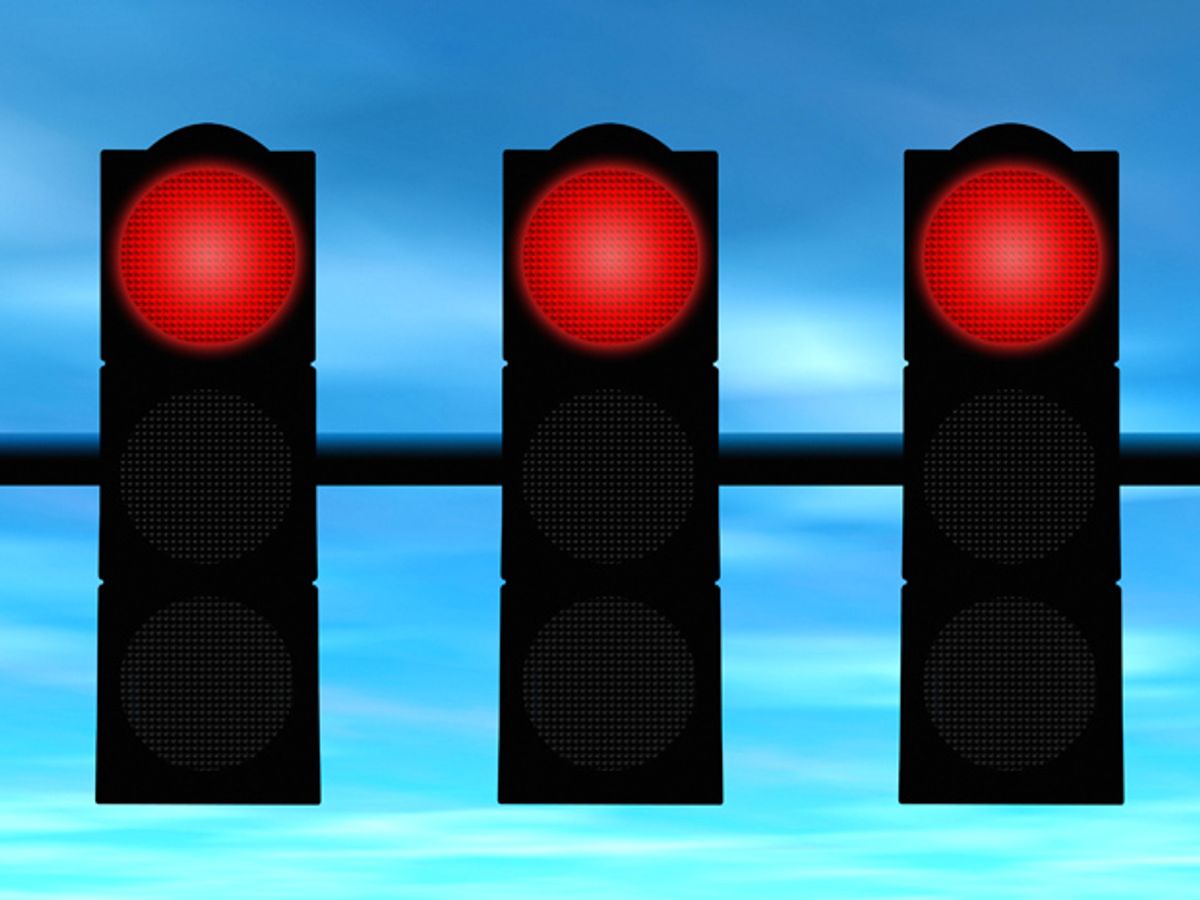Ah, the shame of it: There you are, vegetating in front of an apparently interminable red light, when suddenly you hear a honking sound from behind you. You idiot, you tell yourself (if others don’t tell you first)—the light’s changed to green.
It need never happen again. Now you can download a free app to your Android or iPhone system called EnLighten, from Connected Signals, of Eugene, Ore. In participating cities the app will predict about how much time a red light has left before turning green, then sound an alarm a second or two before it actually does, giving you the chance to focus.
Right now it works only in Eugene and Portland, Ore.; Arcadia and Walnut Creek, Calif.; Garland, Tex.; Salt Lake City, Provo, and Ogden, Utah; Las Vegas, Nev.; and Christchurt, New Zealand. Soon it will work in Palo Alto.
But even in these, shall we say, enlightened, places, the app doesn’t work equally well at all lights. Some lights are harder to predict than others, and a few aren’t predictable at all because they aren’t controlled by the local traffic management system.
On its web site the company notes that different municipalities use different methods to represent what’s going on in their traffic management systems, and the app must therefore use a grab-bag of algorithms to guess what a given traffic light will do. But because the phones are talking to the entire system rather than every little part of it, it’s cheaper to set up than a conventional “intelligent transportation system” based on the dedicated short-range communication (DSRC) standard.
It would seem that Connected Systems is making something of an end-run around the slow-as-molasses plans that governments are working out for car-to-infrastructure (C2X) communications. And if this product works out, further extensions may well follow, speeding traffic along to the benefit of drivers and city managers alike.
The company already plans new versions of the app that will zero in more exactly on where a car is. Today the system takes into account GPS data, the time of day and the normal state of traffic at that time. Future versions will also consult the cars own sensors, for instance by noting how many turns the car has taken and the number of revolutions its wheels have made.
Philip E. Ross is a senior editor at IEEE Spectrum. His interests include transportation, energy storage, AI, and the economic aspects of technology. He has a master's degree in international affairs from Columbia University and another, in journalism, from the University of Michigan.



